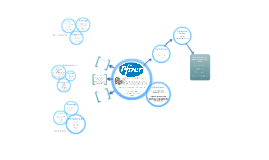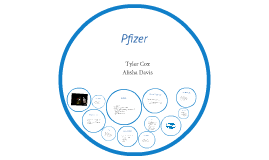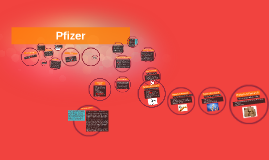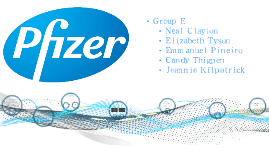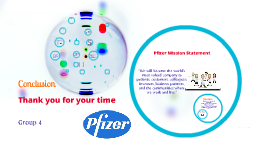Pfizer Presentation
Transcript: Specific Questions: Presented By: In reaction to the difficult times in 2007, Pfizer laid off 10,000 employees or roughly 1/10th of it’s workforce. The lay-off eliminated 1/5th of the sales force in Europe and in the US, and shut down multiple research centers and factories. Research was reorganized to focus only on five main areas. CEO Kindler demanded collaboration from independent researchers, and simultaneously put the company’s research initiatives online for all to see. Initially, the company’s stock price fell in reaction to the employee lay-offs, and prices dropped from roughly $26.00/share in 2007 to roughly $15.00/share in 2008. The stock price remained low, but steady until 2010, when it began to rise again. In February of 2015, Pfizer’s stock price reached a new high of $34.00/share. Case Specific Questions Threat of Rivalry - High Threat of Substitutes - Moderate API (Active Pharmaceutical Ingredient) Manufacturers Contracts Switching Costs Pfizer: Then The company produced tartaric acid and cream of tartar in 1862, expanding to meet the needs of the Union Army during the Civil War. Growth continued due to high demand, and Pfizer became one of the largest producers of citric acid for consumer beverages in 1880. Erhart died in 1891, and Pfizer became the sole owner of the company. In 1905 Emile Pfizer became president of the company and Charles Pfizer died in 1906. After breakthroughs In 1936, the company became a large producer of vitamins. In 1941, Pfizer produced five times more penicillin than originally anticipated, due to their unique fermenting method. The company was the only producing the "miracle drug" in this way. -Will collaborative research, acquisition of other companies, and streamlining existing operations prove effective? -Can Pfizer be effective moving into the US$500 million drugs market? -Should Pfizer invest in R&D of generics to compete with others? Porter's 5 Forces 2 Threat of Suppliers - High The company was founded in 1849 by two cousins, Charles Pfizer, a chemist, and Charles Erhart, a confectioner. With a $2500 loan from Pfizer’s father, the company started in Brooklyn, NY as a fine chemicals business. Pfizer later became a huge manufacturer of newly discovered Penicillin, discovered new ways to produce vitamins, and later became a world leader in pharmaceutical research and AIDS education and prevention. Proposed Recommendations -Collaborative Research: Horizontal contracting -Product Refinement: Streamlining of Existing Products -Product Mix: Innovative Pharmaceuticals, Generics, OTC and Vaccines -Pfizer would like to re-position itself so that no singl drug will account for more than 10% of the company's revenue. Currently, Lipitor is accounting for 25% of the revenue -Horizontal integration and collaboration in order to reduce R&D overhead costs and increase efficiency Julian, Mallory, Matthew, Toni and Janae 1)What is your assessment of the pharmaceutical industry at the time of the case? How is competition changing? What factors are driving the changes? Ans: The pharmaceutical industry is both emerging and mature at the time of the case. It is emerging in the sense that there are constantly new areas for growth potential with the never-ending rise of new disease, but it is also a mature industry that has been around for a long time. There are not many competitors in this industry, but the few that exist are large. At the time of this case, the industry is dealing with decreasing revenues due to competition and government influences on price in Europe. Competitors in this industry are acquiring and merging with competing firms. 2)What will competition in pharmaceuticals look like in 10 years? Ans: There is going to be a significant rise in the number of aging population and in the number of people who can afford to purchase medication. A lot more terminal diseases will be treatable with medications and, therefore, become chronic, which will demand a sustained reliance on prescription medications. There will be growth opportunities to develop drugs for drug-resistant strains of illnesses. There will also be a rise in the number of generics produced due to the expiring on numerous patents. There will also be a sharp drop in revenues due to the adoption of universal health care in countries such as China, Germany, India, and Brazil. 3)What are the keys to success in this industry? The keys to success in this industry are to develop drugs that can compete and be profitable in increasingly price regulated markets. Success will also hinge on the ability of firms to cut R&D costs through identifying and discontinuing non-successful projects early on. The ability to quickly develop blockbuster drugs to combat new disease strains will also be a factor to success. Proposed Strategies Pfizer was the undisputed market leader. Primary Competitors- GlaxoSmithKline, Sanofi-aventis, and Novartis ****Holly mentioned in class Wednesday that we did not need a separate slide to






